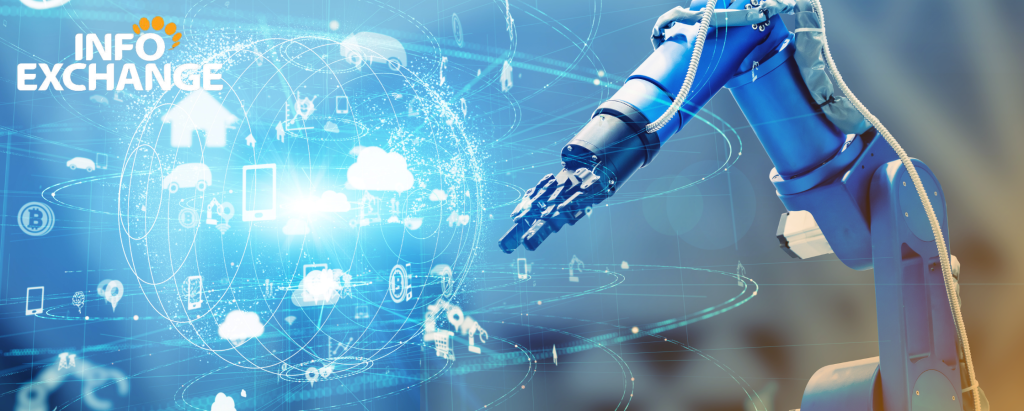Article Author: Ashley Nunes, Senior research associate at Harvard Law School.
The COVID-19 pandemic has accelerated the adoption of cutting-edge technology. From contactless cashiers to welding drones to “chow bots” — machines that serve up salads on demand — automation is fundamentally transforming, rather than merely touching, every aspect of daily life. This will likely please consumers. Forsaking human folly for algorithmic (and mechanistic) perfection means better, cheaper and faster service.
But what should workers — who once provided these services — expect? Can they also benefit from technological progress? If so, how?
Technology’s impact on the labor market is often viewed through the lens of job creation or job destruction. Economists tend to treat technology as either displacing labor or reinstating it. If technology displaces workers, jobs are lost. If technology creates (or reinstates) work, jobs are created. Under this dichotomy, the key question is whether technology creates more jobs than it destroys. The World Economic Forum estimates that by 2025, technology will create at least 12 million more jobs than it destroys, a sign that in the long run, automation will be a net positive for society.
Technology’s job-boosting ability is often touted by tech advocates. Take Waymo, the Google-backed startup developing driverless taxis. In recent years, the company’s sensor-laden minivans have become a common sight in some American suburbs. But driverless vehicles raise concerns about job losses. What will otherwise would-be cab (or more likely Uber and Lyft) drivers now do? Waymo’s response: They would take on new jobs created by self-driving technology, gigs like self-driving-fleet technicians, rider-support operators and software engineers. “We can be helpful as a company that creates jobs,” said one Waymo executive.
Job creation isn’t everything, however. Equally important is what workers can earn for working those jobs. Do wages rise or fall owing to technological progress?
BOTS CAN BOOST WAGES
Conventional economic theory posits that wages are dictated by supply and demand. When jobs require specialized skills, wages rise, because fewer people can meet demand for these skills. Wages also rise when workers are scarce, because there are fewer people available to supply their labor.
Work by the late economist Alan Krueger hinted at automation’s wage-boosting abilities. Krueger found that computer-savvy workers — laborers who worked alongside automation — commanded wage premiums of 10% to 15% more than their computer-illiterate counterparts. The economic historian James Bessen has suggested that over the past two centuries, wages have risen tenfold owing to technological progress. It’s an encouraging story, but unfortunately, it’s also an incomplete one.
Bots may well boost wages, but they can also depress them. The economists Daron Acemoglu and Pascual Restrepo recently found that laborers displaced from jobs owing to automation are often forced to compete with other workers for whatever jobs are left. For example, clerical workers who have been replaced by automation may subsequently seek employment in sectors that have not been automated, like retail work. Their entry into the retail sector causes wages in this sector to drop, as clerical and retail workers undercut one another for employment.
The wage-hindering effects of technology manifest in other industries. Cab drivers in London could once command a hefty wage premium. The reason? Becoming one wasn’t easy. Would-be cabbies had to demonstrate encyclopedic mastery of London’s streets, and few could do so. The result was an earnings boost for cabbies: Scarcity, after all, breeds value. But along came Uber. The ride-hailing giant equips its drivers with a powerful smartphone app that provides turn-by-turn instructions on where to go.
That should benefit aspiring cabbies. And it did. Uber has — since its 2012 entry into London — created jobs for more than 40,000 drivers. It has afforded these drivers an opportunity to “make money and support my family,” as one driver told the BBC. But by purging the need for specialized knowledge, by making ferrying passengers around London easier, the Uber app also purged the need for encyclopedic mastery that had historically commanded a wage premium. The result? Accusations (and plenty of litigation, to boot) that the ride-hailing giant underpays its drivers.
AUTOMATE WITH CAUTION
Technology can boost earnings, particularly when using that technology demands specialized skills and knowledge. But bots can also depress wages by making some jobs easier to perform. If a job is simple, anyone can do it. And if anyone can do it, why pay workers a premium? When the market demands fewer skills, workers with anything extra become less valuable.
This prospect may please firms. Paying workers less is a surefire way to boost margins. But this strategy is also risky. Technology does not purge the need for human labor but rather changes the type of labor required. Autonomous does not mean humanless. Technology can and will fail. And when it does, firms will have to make nice with the very workers who — during automation’s better days — were shortchanged.
Automation can increase productivity, improve efficiency and reduce errors. Robots can, and should, occupy professions that are too risky for human workers, offer little in the way of purpose and deprive human workers of the joys of free living.
Yet the long-term benefits of forsaking humans for robots are hardly guaranteed. Firms stand to lose cash should the productivity benefits of technology adoption dwarf costs. These costs (and there’s always a cost) are typically discounted by firms keen to show solvency. But adopting bots can push firms further into the red. Technological singularity — the idea that machines know all, and can fix all — remains, despite what we’re told, a long way away.
Firms should consider this reality when adopting technology. Executives should ask themselves three questions when scrutinizing the value of bots. First, what can’t technology do? Technological valor may be dizzying, but it too — much like humans — has limits. What are they?
Second, how do those limits affect the operation? Investing in tech can boost productivity, but only up to a point. What does that point look like, and is it acceptable to shareholders?
Third, how does the cost of overseeing technology affect its value proposition? Technology should be observed and kept in check. This is particularly true in safety-critical industries like transportation, energy, and health care. What is the cost of doing so, and how does it affect a bot’s cost advantage?
Asking these questions may reveal surprising answers about when (and under what conditions) forsaking human muscle for algorithmic prowess makes sense. There is, as the writer Nicholas Carr notes, no economic law that says that everyone, or even most people, automatically benefits from technological progress.





